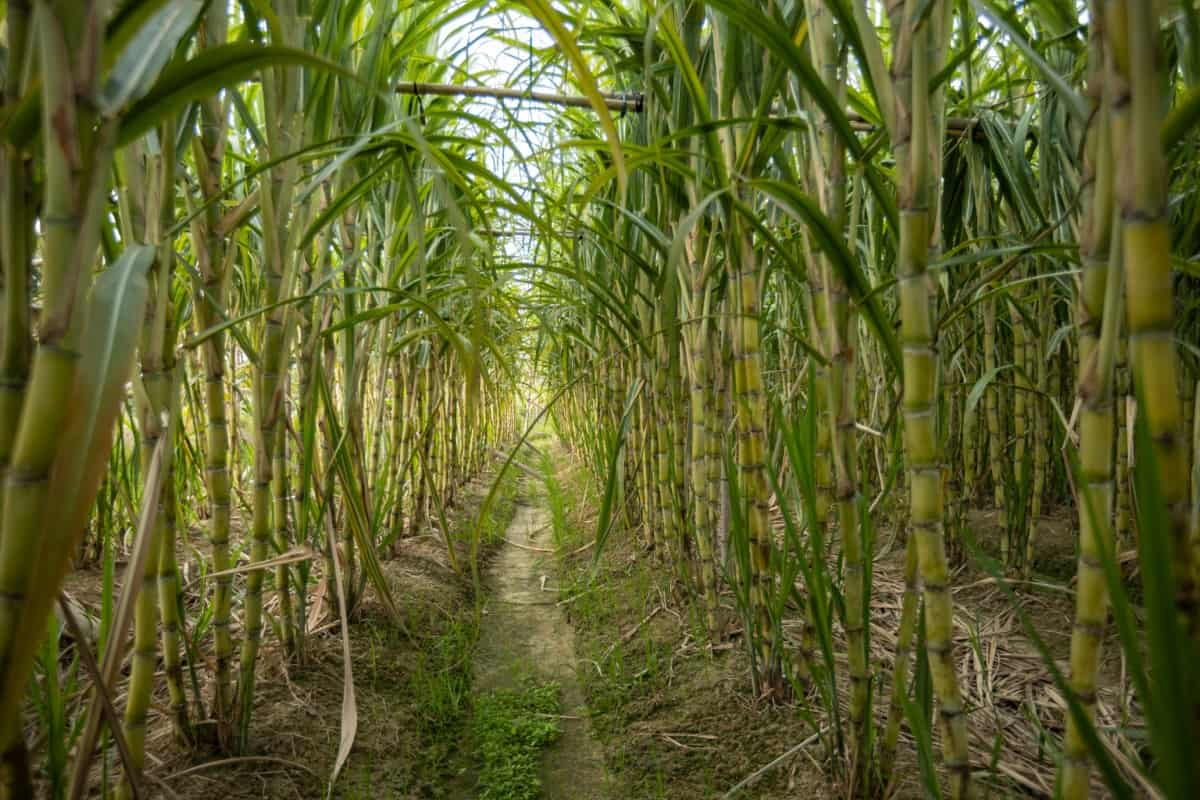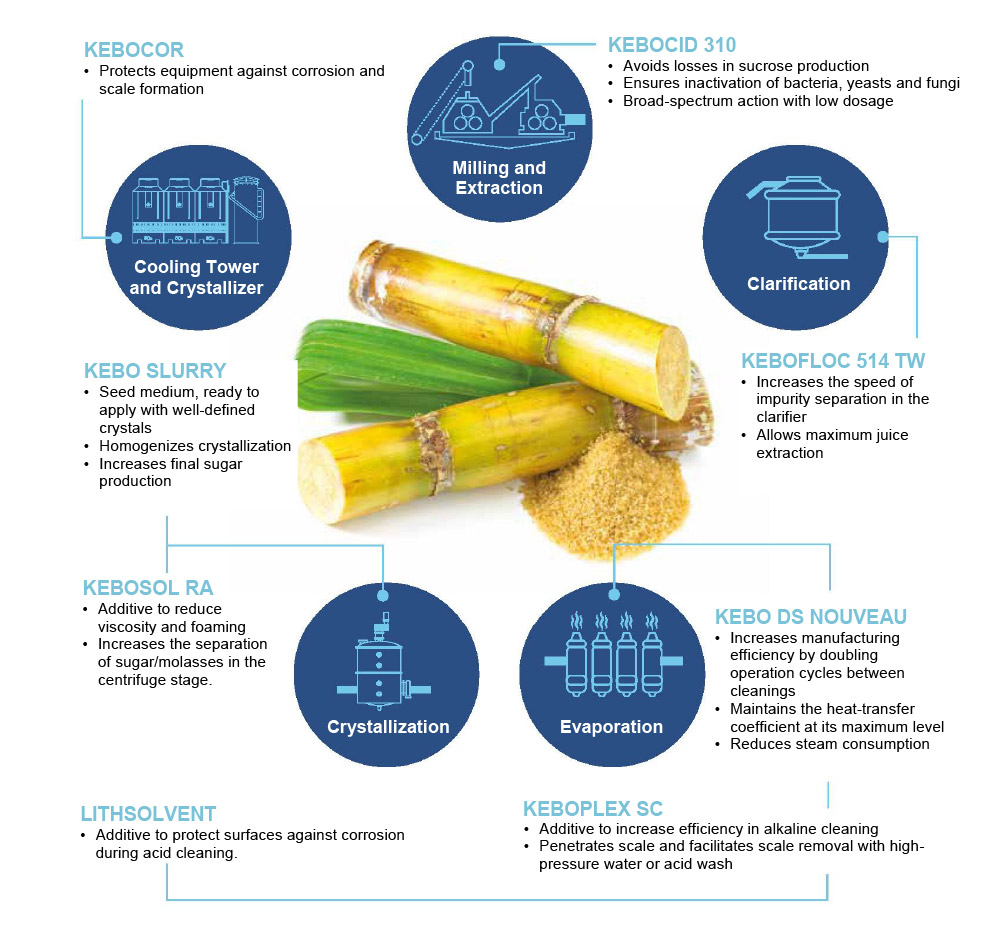Understanding the Diverse Roles of Sugar Cane in Farming and Production
Sugar Cane plays an important role in both farming and production. As a significant money plant, it affects economies in tropical regions. Its flexibility prolongs beyond sugar production to biofuels and eco-friendly products. Furthermore, sugar Cane growing advertises dirt wellness and biodiversity. Nevertheless, the complete scope of its payments and prospective in sustainable methods continues to be to be explored. What innovative measures could improve its function in future agricultural systems?
The Agricultural Importance of Sugar Walking Stick
Sugar Cane plays a necessary duty in farming, contributing considerably to the economic situations of many tropical and subtropical regions. This grass varieties flourishes in cozy environments, requiring enough sunlight and water, making it a perfect plant for these locations. Sugar Cane is primarily grown for its high sucrose material, which acts as an important resources for sugar production. In addition, it plays a substantial function in dirt conservation by preventing erosion and boosting dirt fertility through its development cycles. Sugar cane's substantial origin system help in water retention, profiting neighboring crops. The plant sustains neighborhood ecosystems by giving environment and food for numerous wild animals species. Farmers often incorporate sugar Cane right into crop rotation systems, improving biodiversity and agricultural strength. The growing of sugar Cane not only fulfills regional food needs however additionally cultivates lasting agricultural techniques, promoting long-lasting environmental health in farming areas.
Economic Contributions of Sugar Cane Cultivation
Sugar Cane is typically ignored, its economic contributions are considerable, particularly in developing countries where it offers as a necessary cash money crop. The cultivation of sugar Cane creates significant earnings for millions of farmers, providing livelihoods and cultivating country development. As a versatile crop, it supports various markets, including sugar production, biofuels, and pharmaceuticals, as a result stimulating neighborhood economic situations.
Sugar Cane cultivation advertises job production in agricultural industries, processing facilities, and transport networks. It likewise adds to fx incomes through exports, improving nationwide economic stability. In areas such as Brazil and India, sugar Cane plays a pivotal role in farming exports, strengthening trade balances.
Furthermore, the crop's spin-offs, like bagasse and molasses, offer further financial possibilities, used in power generation and pet feed. The financial influence of sugar Cane prolongs beyond simple growing, influencing wider commercial and farming landscapes.
The Process of Sugar Production From Walking Stick

The trip from sugar Cane to polished sugar includes several vital stages that highlight the intricacy of sugar production. Originally, fully grown sugar Cane stalks are collected and carried to processing centers. The Cane is after that crushed to extract juice, which consists of a high focus of sucrose. This juice undertakes clarification, where contaminations are eliminated, typically making use of lime and warm
Next off, the made clear juice is evaporated to concentrate the sugar web content. The resulting syrup is after that based on crystallization, permitting sugar crystals to develop. These crystals are separated from the remaining syrup via centrifugation and cleaned to eliminate any recurring molasses.
The last involves refining, where sugar crystals are additional cleansed and blonde, resulting in the white granulated sugar generally utilized in food products. This thorough process highlights the intricate trip from raw Cane to the sugar that plays a vital duty in different culinary applications.
Sugar Cane as a Source of Biofuels
As passion in renewable resource resources grows, sugar Cane has actually become a substantial candidate for biofuel manufacturing. The plant's high sugar content enables effective fermentation processes, converting sugars right into ethanol. This biofuel acts as an eco-friendly option to fossil fuels, decreasing greenhouse gas discharges and advertising power sustainability.
Nations like Brazil have actually long made use of sugar Cane for ethanol, establishing comprehensive production infrastructure that sustains both residential power needs and global export. The cultivation of sugar Cane for biofuel has actually additionally created financial opportunities, especially in country locations, where it produces employment and sustains neighborhood agriculture.
Furthermore, sugar Cane biofuels can be incorporated into existing fuel systems, making them a functional option for moving far from conventional energy sources. As technical improvements proceed to improve manufacturing efficiency, sugar walking stick's function in biofuel development is positioned to increase, further adding to worldwide initiatives towards renewable resource fostering.
Innovative Uses Sugar Cane in Biodegradable Plastics
An expanding variety of scientists and suppliers are checking out innovative uses sugar Cane in the manufacturing of eco-friendly plastics. Sugar walking stick, abundant in sucrose, can be processed to develop polylactic acid (PLA), a biopolymer that serves as an option to petroleum-based plastics. This bioplastic can be used in various applications, consisting of packaging, non reusable cutlery, and agricultural films.
Making use of sugar cane-derived PLA presents numerous advantages, such as decreased reliance on nonrenewable fuel sources and the capacity for reduced carbon discharges throughout production. In addition, sugar walking stick's renewable nature makes it an enticing selection in the mission for lasting materials. Current innovations in processing techniques have boosted the performance and cost-effectiveness of creating these bioplastics, cultivating greater fostering in the market. As the demand for environment-friendly solutions grows, sugar Cane attracts attention as a valuable resource in the change in the direction of greener manufacturing techniques.
Ecological Benefits of Sugar Cane Farming

Furthermore, sugar Cane calls for much less water compared to various other plants, making it appropriate for farming in arid regions. Effective usage of plant residues, such as bagasse, can decrease waste and offer renewable resource resources. In addition, sugar Cane farming can facilitate the facility of agroforestry systems, developing a collaborating connection in between crops and trees. These techniques not just protect the atmosphere yet additionally promote sustainable agricultural methods, inevitably benefiting neighborhood areas and ecosystems.
The Future of Sugar Cane in Sustainable Practices

The potential for sugar Cane to contribute to sustainable power sources is obtaining traction. Biofuels stemmed from sugar Cane can significantly reduce carbon emissions compared to nonrenewable fuel sources, lining up with global environment objectives. In addition, improvements in waste monitoring permit for the utilization of spin-offs, even more minimizing environmental impact.
Research into drought-resistant sugar Cane varieties is additionally underway, supplying resilience against climate modification. As stakeholders across the sector embrace these lasting techniques, sugar Cane is poised to play a vital function in cultivating farming sustainability, ensuring its relevance in future markets and adding positively to ecological balance.

Regularly Asked Questions
Just How Does Sugar Cane Affect Dirt Wellness and Fertility?
The influence of sugar Cane on dirt health and wellness and fertility is considerable. Its considerable root system boosts dirt framework, while organic issue from rotting leaves adds crucial nutrients, promoting total fertility and sustaining varied microbial life.
What Are the Labor Problems for Sugar Cane Employees?
Labor problems for sugar Cane employees vary extensively, usually identified by lengthy hours, reduced incomes, and unsafe settings. Numerous face obstacles such as absence of accessibility to healthcare and insufficient protective steps against hazardous conditions.
Can Sugar Cane Be Expanded in Non-Tropical Climates?
Sugar Cane typically prospers in tropical environments due to its warm and moisture needs. Particular non-tropical areas may effectively cultivate it through certain farming methods, though yields and quality may be significantly lowered.
What Vermin Typically Threaten Sugar Cane Crops?
Parasites harmful sugar Cane crops include the sugarcane borer, aphids, and nematodes. These organisms can considerably impact crop return, requiring reliable pest management approaches to assure healthy growth and make best use of farming performance.
Just How Does Sugar Cane Cultivation Effect Citizen Communities?
The farming of sugar Cane substantially affects local neighborhoods by providing work chances, promoting economic growth, and influencing social frameworks. In addition, it can lead to environmental obstacles, affecting agricultural methods and neighborhood health and wellness in the region.
Sugar Cane is primarily grown for its high sucrose content, which offers as an important raw product for sugar manufacturing. Farmers typically incorporate sugar Cane right into crop rotation systems, improving biodiversity and agricultural resilience. The trip from sugar Cane to refined sugar involves a number of crucial stages that highlight the intricacy of sugar production. The last stage includes refining, where sugar crystals are further detoxified and bleached, resulting in the white granulated sugar generally utilized in food additional info items. The plant's high sugar material allows reliable fermentation processes, transforming sugars right into ethanol.